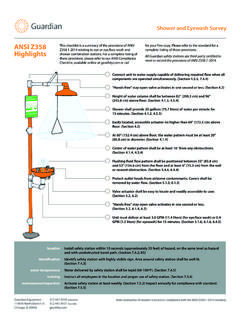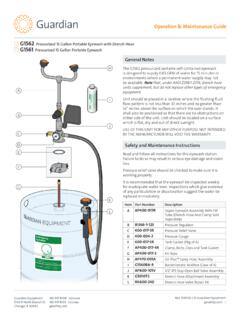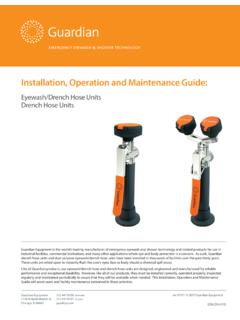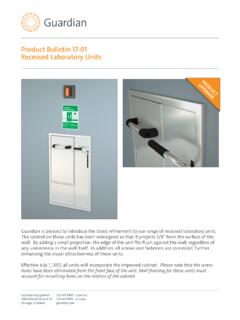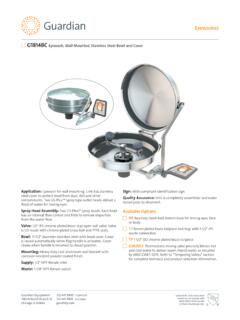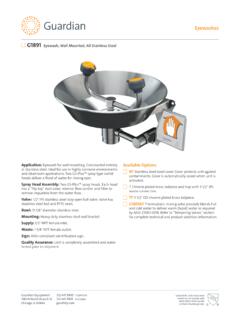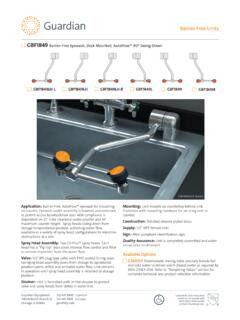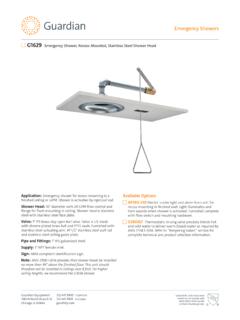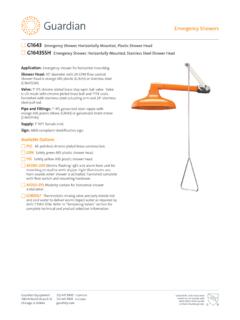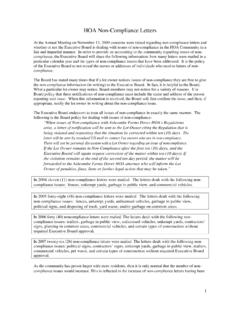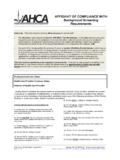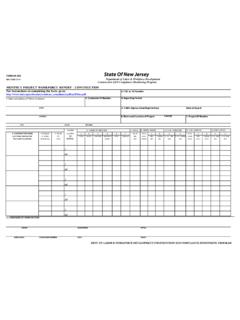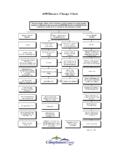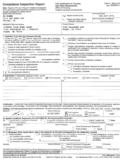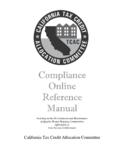Transcription of ANSI / ISEA Z358.1-2014 Compliance Checklist
1 ANSI / ISEA Compliance Checklist ANSI / ISEA Compliance Checklist INTRODUCTION. The selection of emergency eyewash and shower equipment ..where the eyes or body of any person may be exposed is often a complicated process. In addition to addressing to injurious corrosive materials, suitable facilities for quick design and engineering issues, specifiers must be aware drenching or flushing of the eyes and body shall be provided of regulatory requirements and Compliance standards. within the work area for immediate emergency use.
2 A common reference point when selecting emergency equipment is ANSI/ISEA , Emergency Eyewash and ANSI Shower Equipment. This standard is a widely accepted The OSHA regulation regarding emergency equipment guideline for the proper selection, installation, operation and is quite vague, in that it does not define what constitutes maintenance of emergency equipment. suitable facilities for drenching the eyes or body. In order To assist specifiers in understanding the provisions of this to provide additional guidance to employers, the American standard, Guardian Equipment has prepared this ANSI National Standards Institute (ANSI) has established a standard Compliance Checklist .
3 In this Checklist , we have summarized covering emergency eyewash and shower equipment. This and graphically presented the provisions of the standard. standard ANSI is intended to serve as a guideline This Checklist can serve as a starting point for designing for the proper design, certification, performance, installation, emergency eyewash and shower systems. use and maintenance of emergency equipment. As the most comprehensive guide to emergency showers and eyewashes, it has been adopted by many governmental health and LEGAL REQUIREMENTS safety organizations within and outside the US, as well as the The Occupational Safety and Health Act of 1970 was enacted Uniform Plumbing Code (UPC) and International Plumbing to assure that workers are provided with safe and healthful Code (IPC).
4 The ANSI standard is part of the building code in working conditions. Under this law, the Occupational Safety locations that have adopted the International Plumbing Code. and Heath Administration (OSHA) was created and authorized (IPC-Sec. 411). to adopt safety standards and regulations to fulfill the mandate of improving worker safety. ANSI was originally adopted in 1981. It was revised in 1990, 1998, 2004, 2009 and again in 2014. This Compliance OSHA has adopted several regulations that refer to the use Checklist summarizes and graphically presents the provisions of emergency eyewash and shower equipment.
5 The primary of the 2014 version of the standard. regulation is contained in 29 CFR , which requires Guardian Equipment 312 447 8100 telephone Listed 8116. Units have been 1140 N North Branch St 312 447 8101 facsimile tested to and comply with ANSI and the 2 Chicago, IL 60642 Uniform Plumbing Code. ANSI / ISEA Compliance Checklist GENERAL CONSIDERATIONS. ANSI 2014 contains provisions regarding the design, certification, performance, installation, use and maintenance of various types of emergency equipment (showers, eyewashes, drench hoses, etc.)
6 In addition to the provisions in the standard, there are additional considerations that are not part of the standard. We believe that these considerations should also be addressed when considering emergency equipment. These include the following: 1. FIRST AID DEVICES. Emergency eyewash and shower units are designed to deliver 3. WATER TEMPERATURE. water to rinse contaminants from a user's eyes, face or body. The 2014 version of the standard states that the water As such, they are a form of first aid equipment to be used in temperature delivered by emergency equipment should be the event of an accident.
7 However, they are not a substitute for tepid.' Tepid is defined to be between 60 F (16 C) and 100 F. primary protective devices (including eye and face protection (38 C). However, in circumstances where a chemical reaction and protective clothing) or for safe procedures for handling is accelerated by flushing fluid temperature, a facilities hazardous materials. safety/health advisor should be consulted to determine the optimum water temperature for each application. 2. LOCATION OF EMERGENCY EQUIPMENT.
8 The delivery of tepid water to emergency equipment may In general, the ANSI standard provides that emergency raise complicated engineering issues. At a minimum, it equipment be installed within 10 seconds walking time from generally involves providing both hot and cold water to the the location of a hazard (approximately 55 feet) (Appendix unit, and then installing a mixing valve to blend the water to B5). The equipment must be installed on the same level as the desired temperature. Guardian offers a variety of mixing the hazard ( accessing the equipment should not require valves and turnkey, recirculating tempering systems to going up or down stairs or ramps).
9 The path of travel from the provide tempered water. Please contact our office for further hazard to the equipment should be free of obstructions and information. as straight as possible. However, there are certain circumstances where these 4. SHUT OFF VALVES. guidelines may not be adequate. Previous versions of the Plumbed emergency equipment must be connected to a standard expressly provided that, where workers are handling potable water supply line. It may be advisable to install a shut particularly strong acids, caustics or other materials where off valve on the water line, upstream of the unit, to facilitate the consequences of a spill would be very serious, emergency maintenance of the equipment.
10 If a shut off valve is installed, equipment should be installed immediately adjacent to the provision must be made to prevent unauthorized closure of hazard. Although Appendix B5 of the 2014 standard briefly the shut off valve. (Sections , , , , , , reviews the proper location of emergency equipment under ) Such provision can include removing the handle of such scenarios, we still believe the previous versions of the the shut off valve or locking the valve in the open position. standard to be correct.
